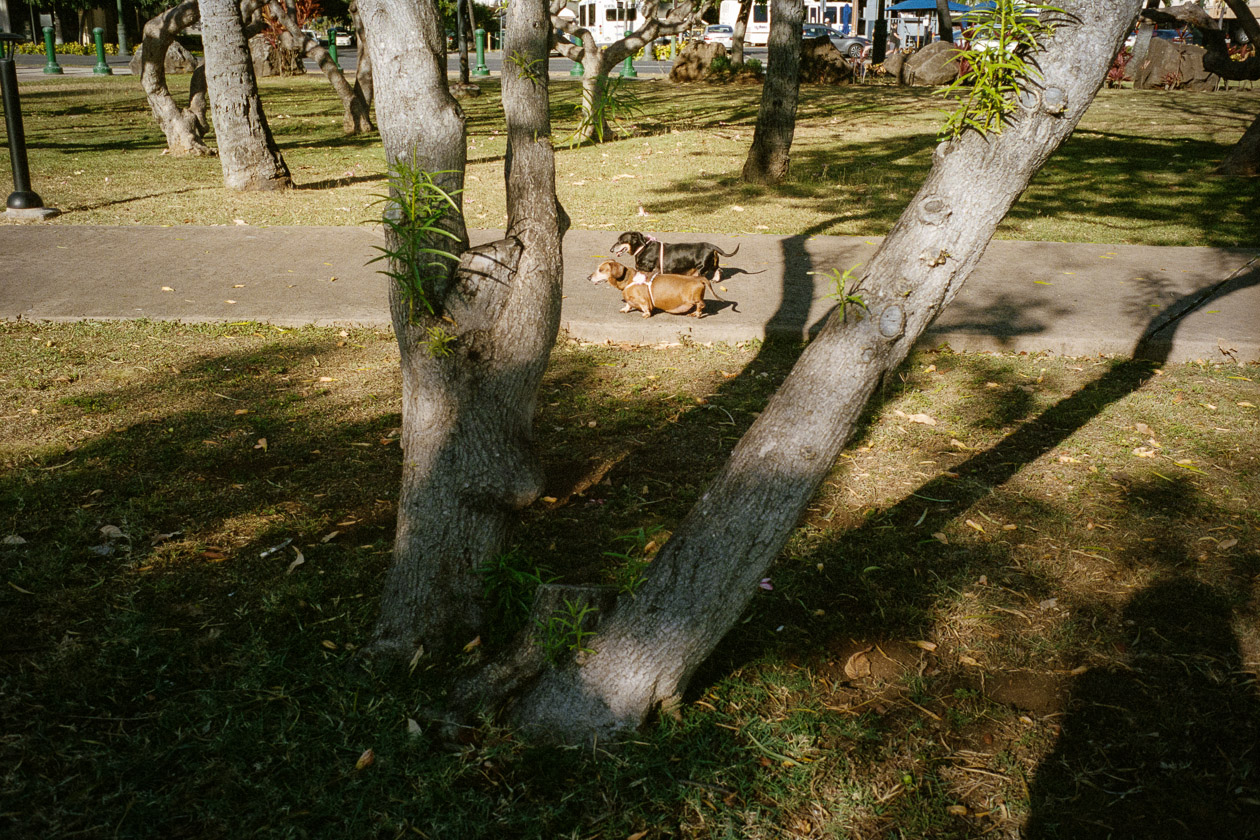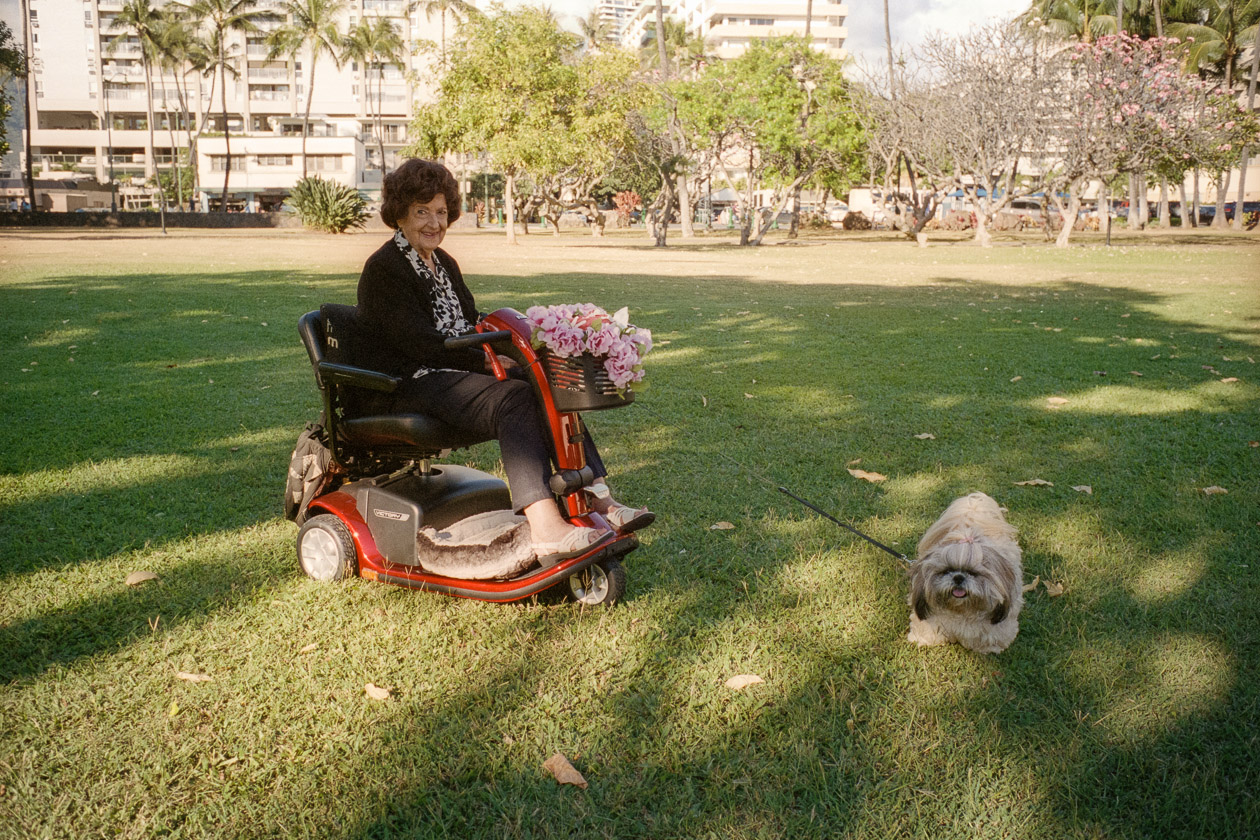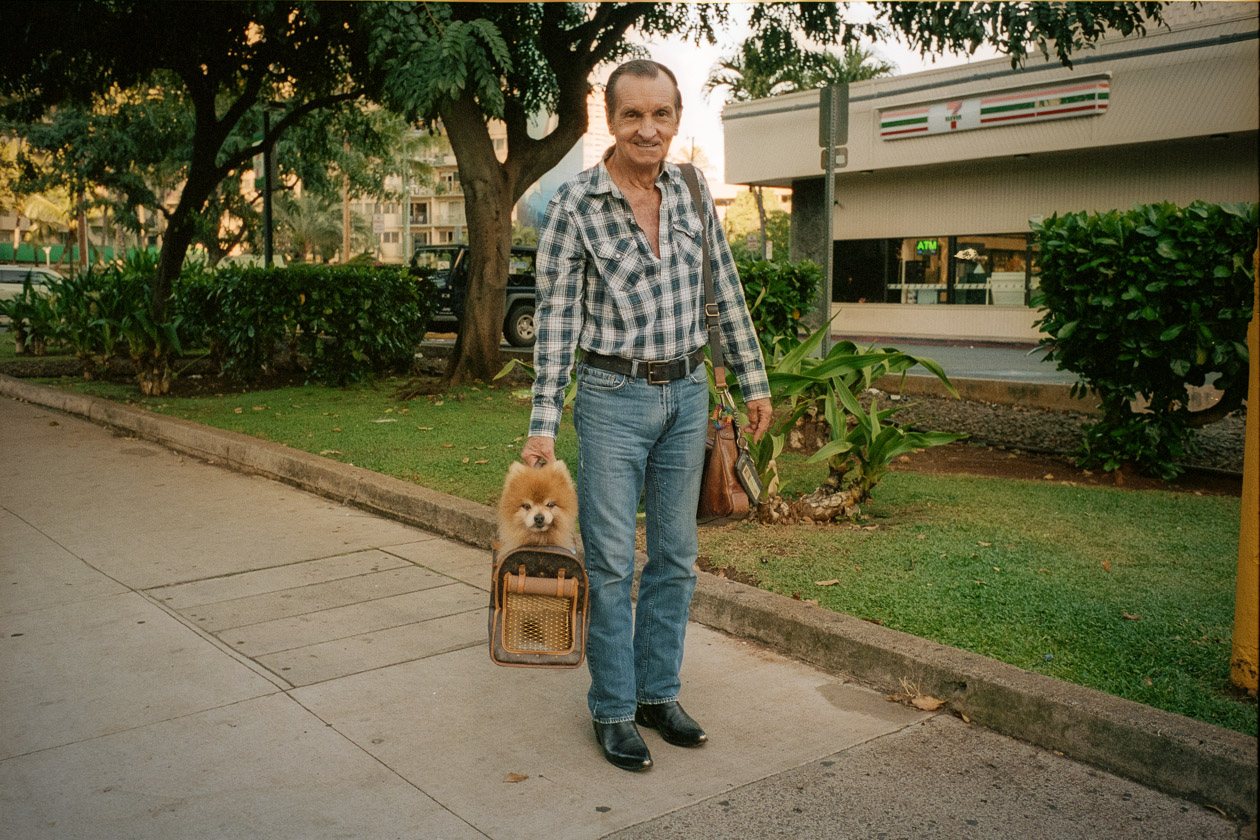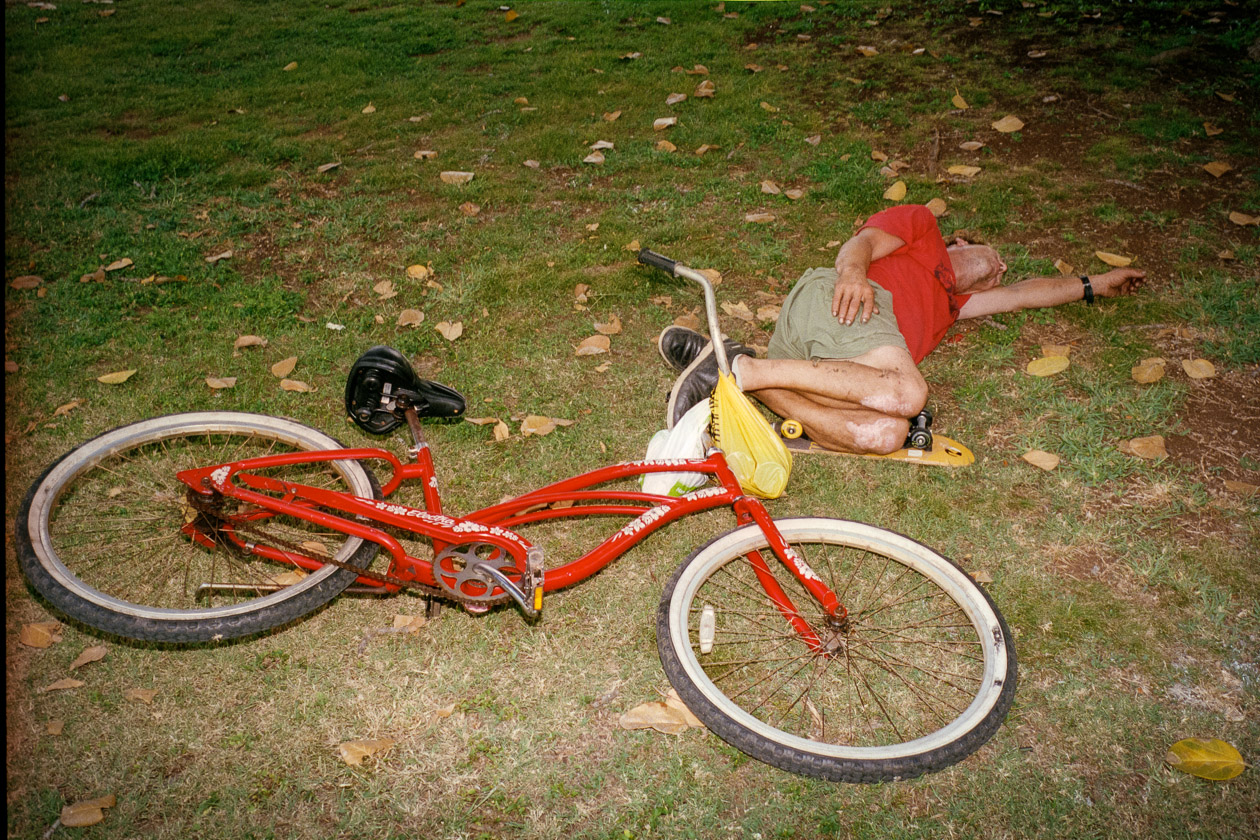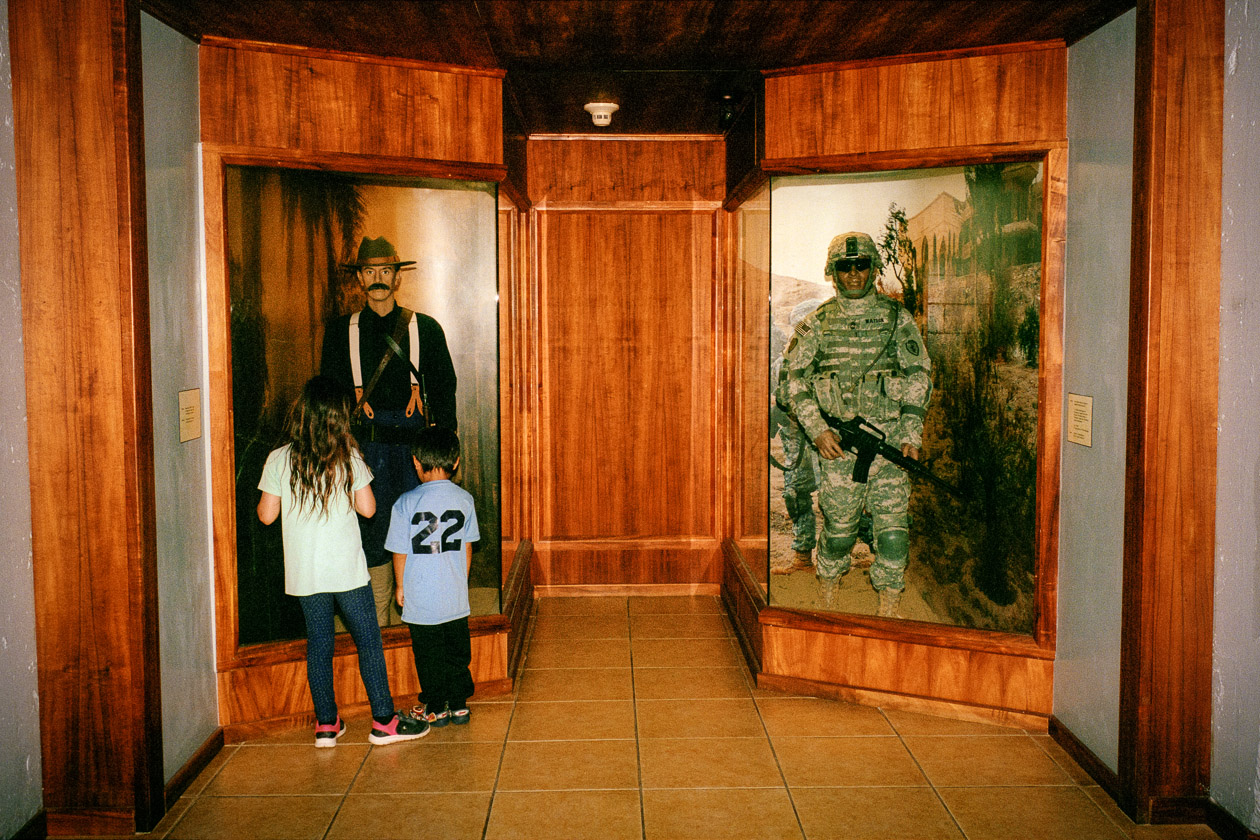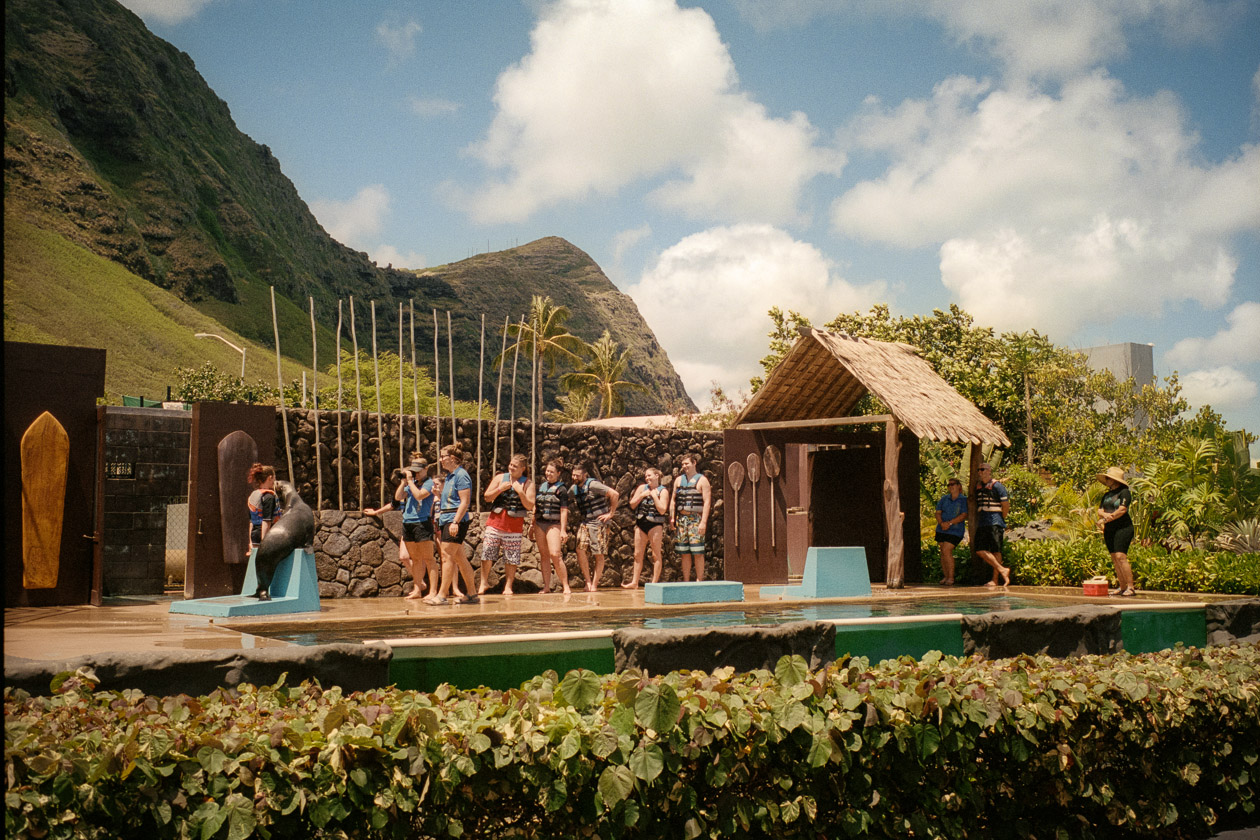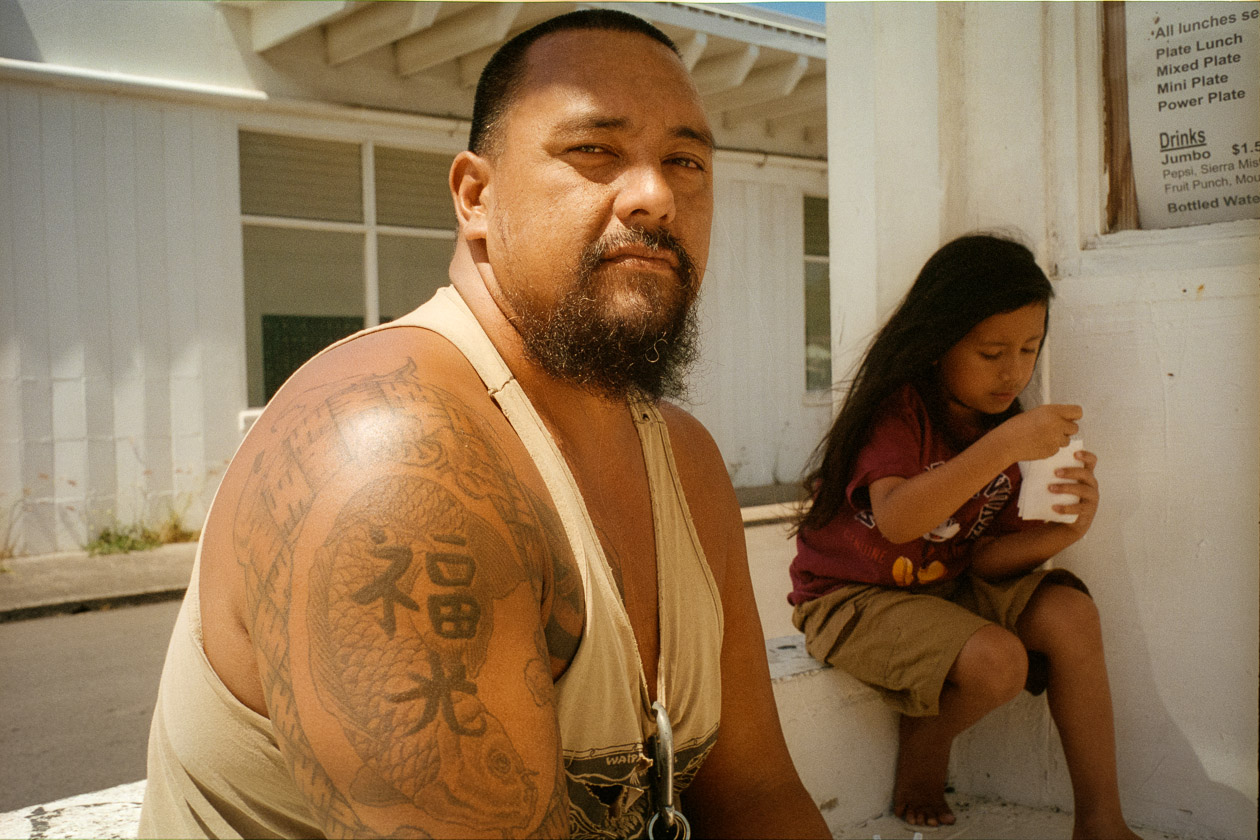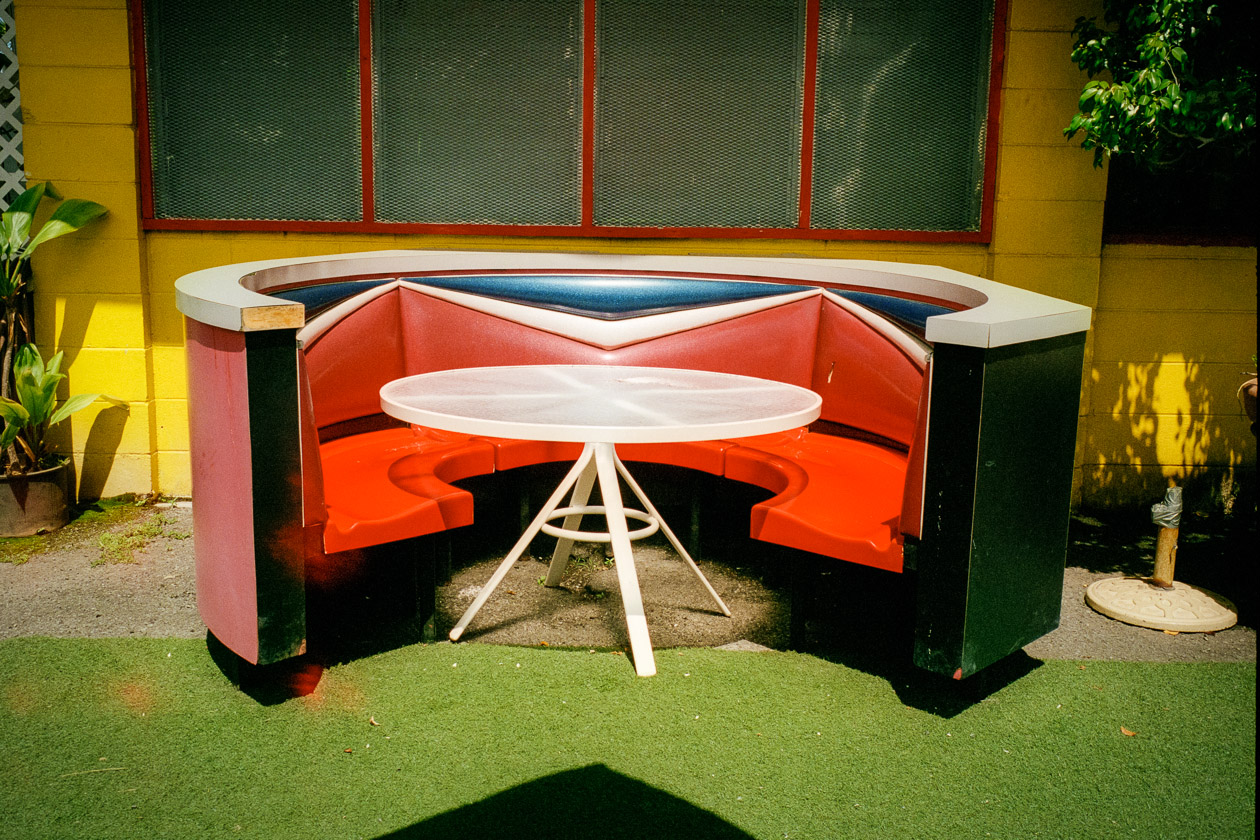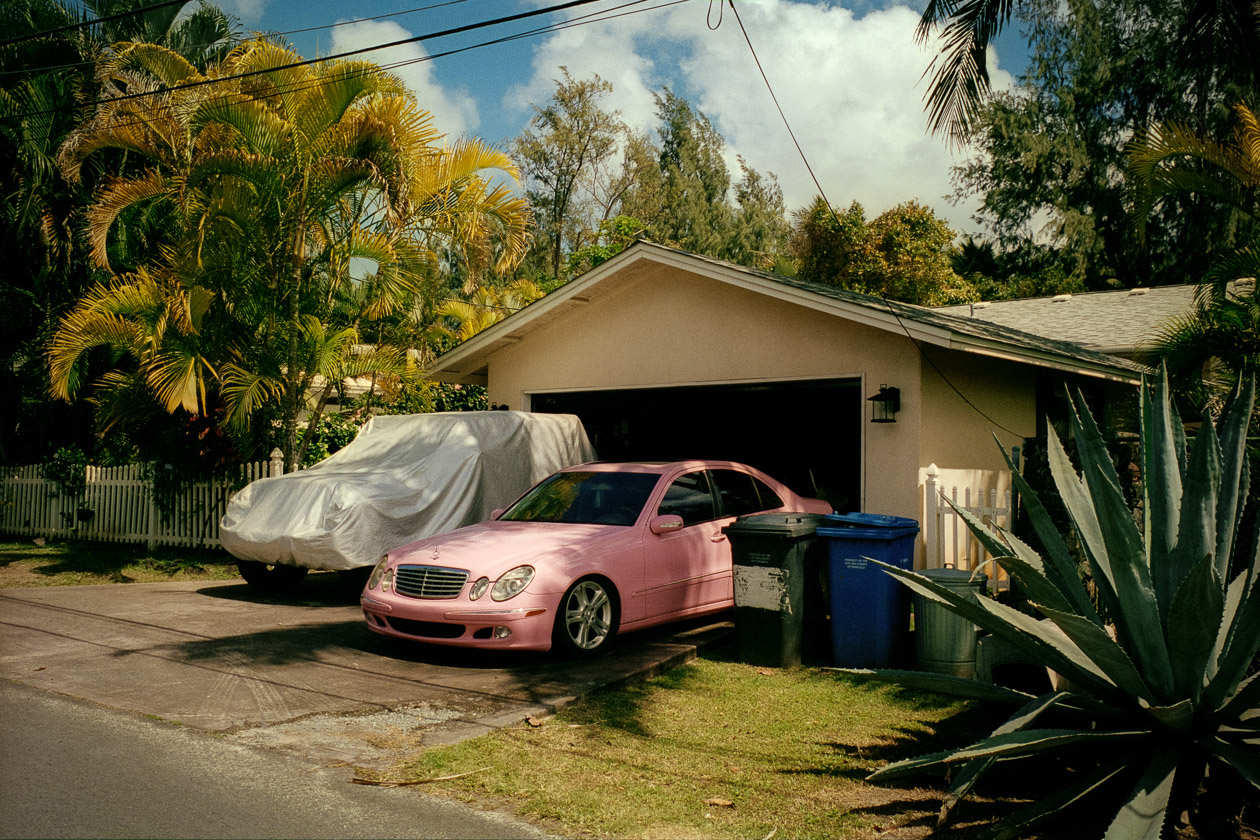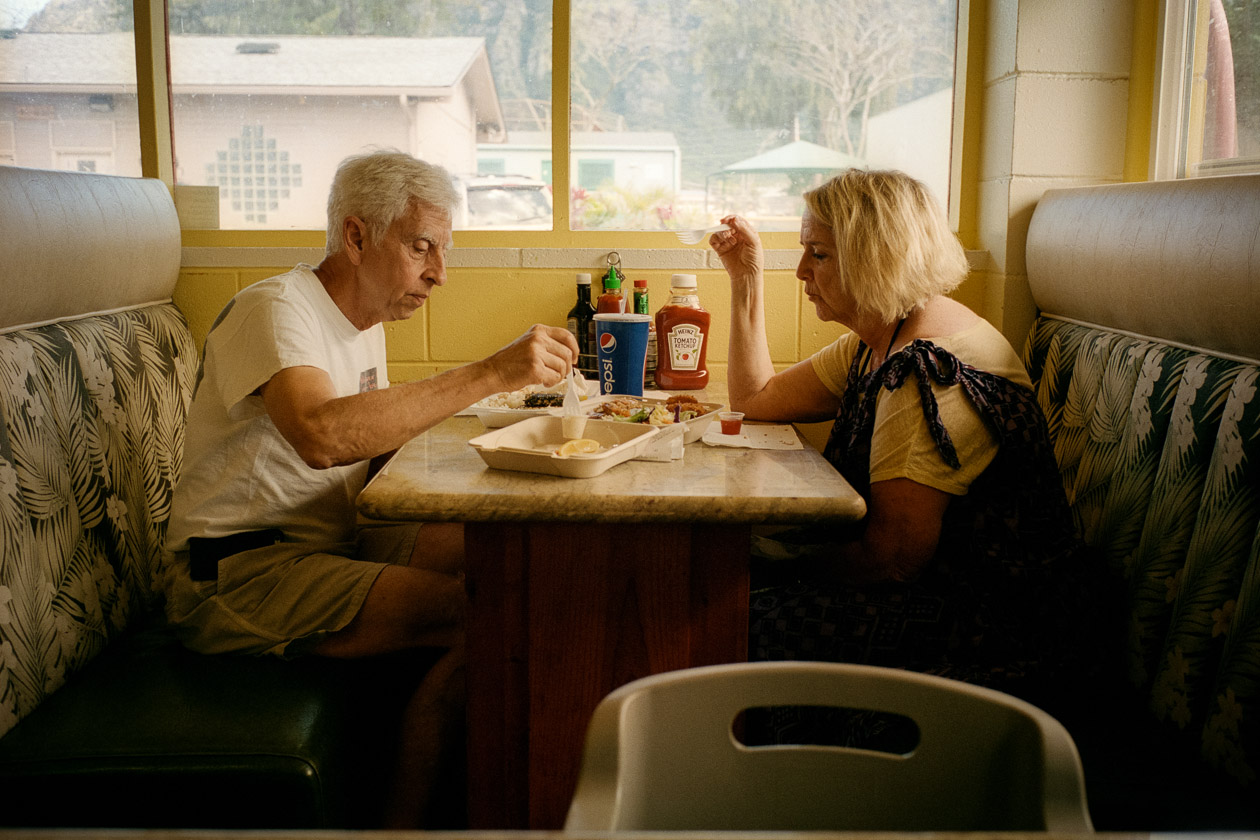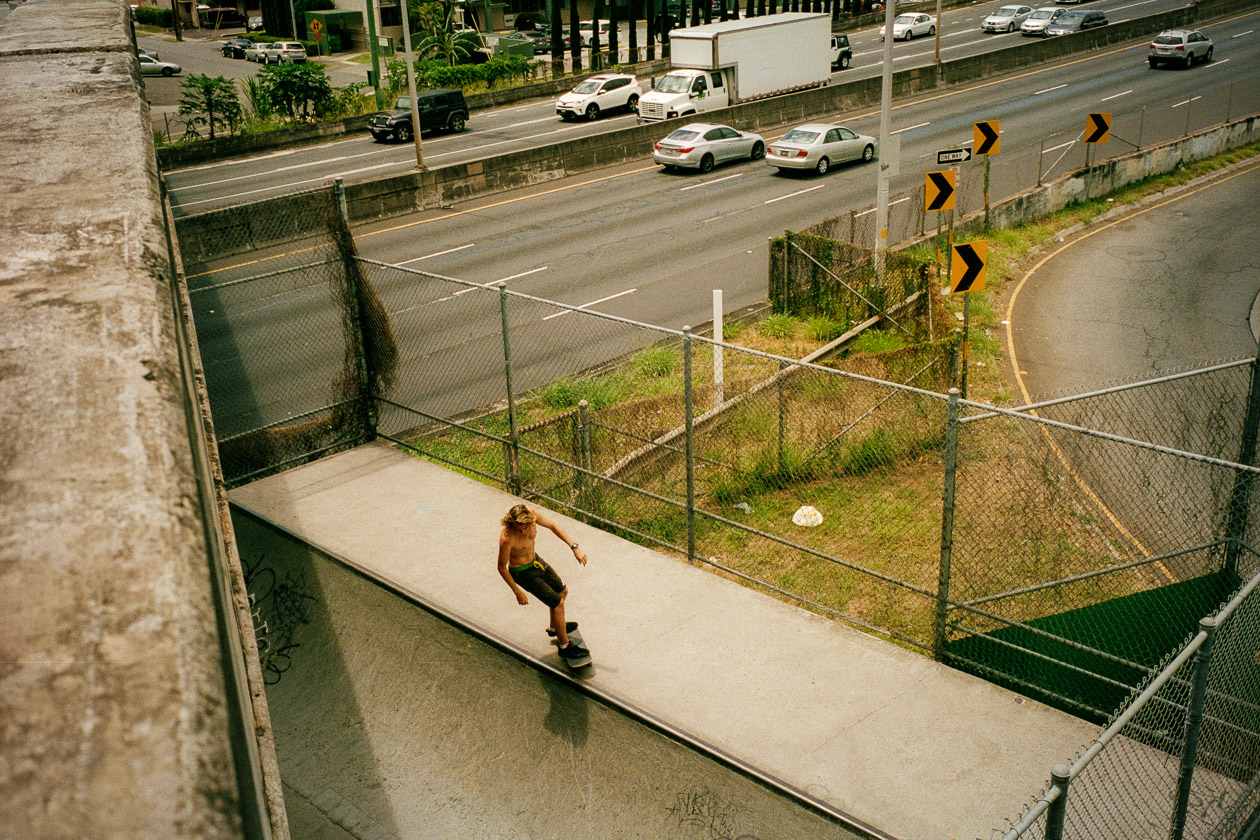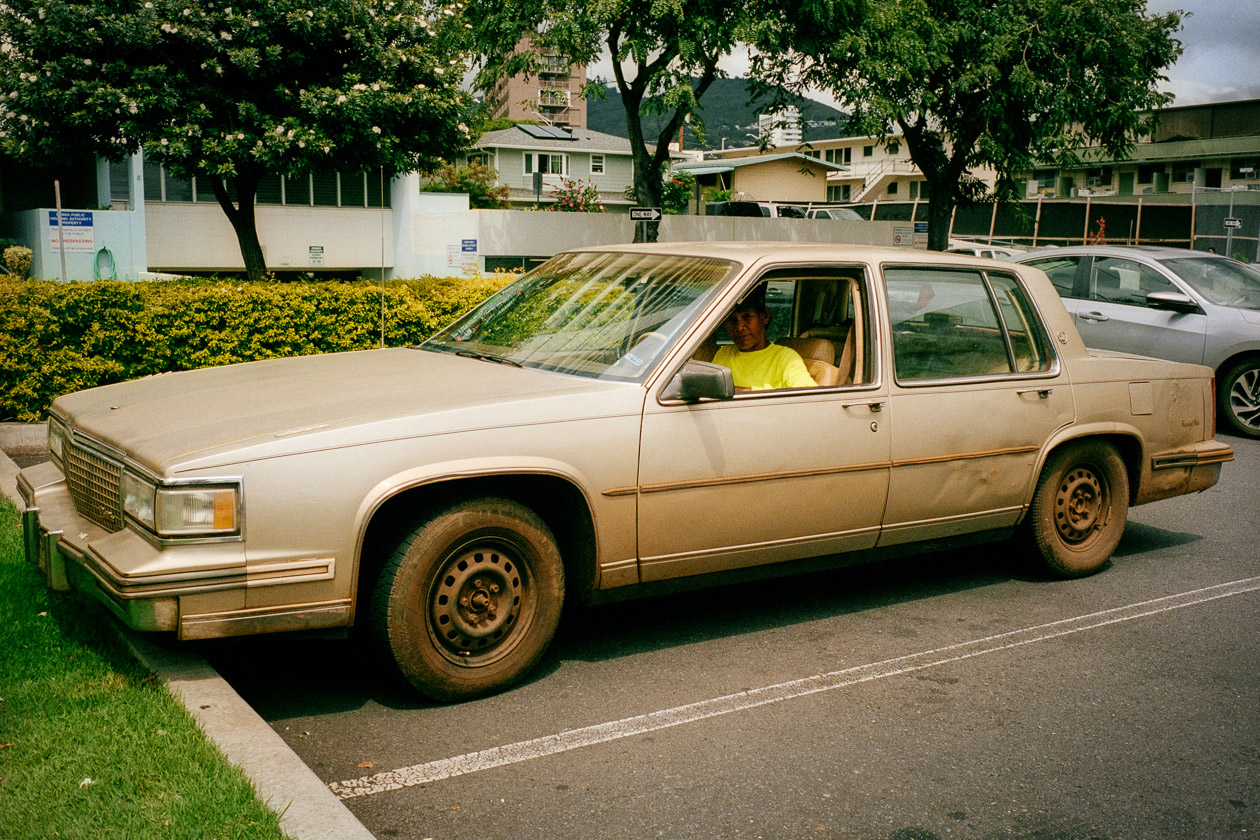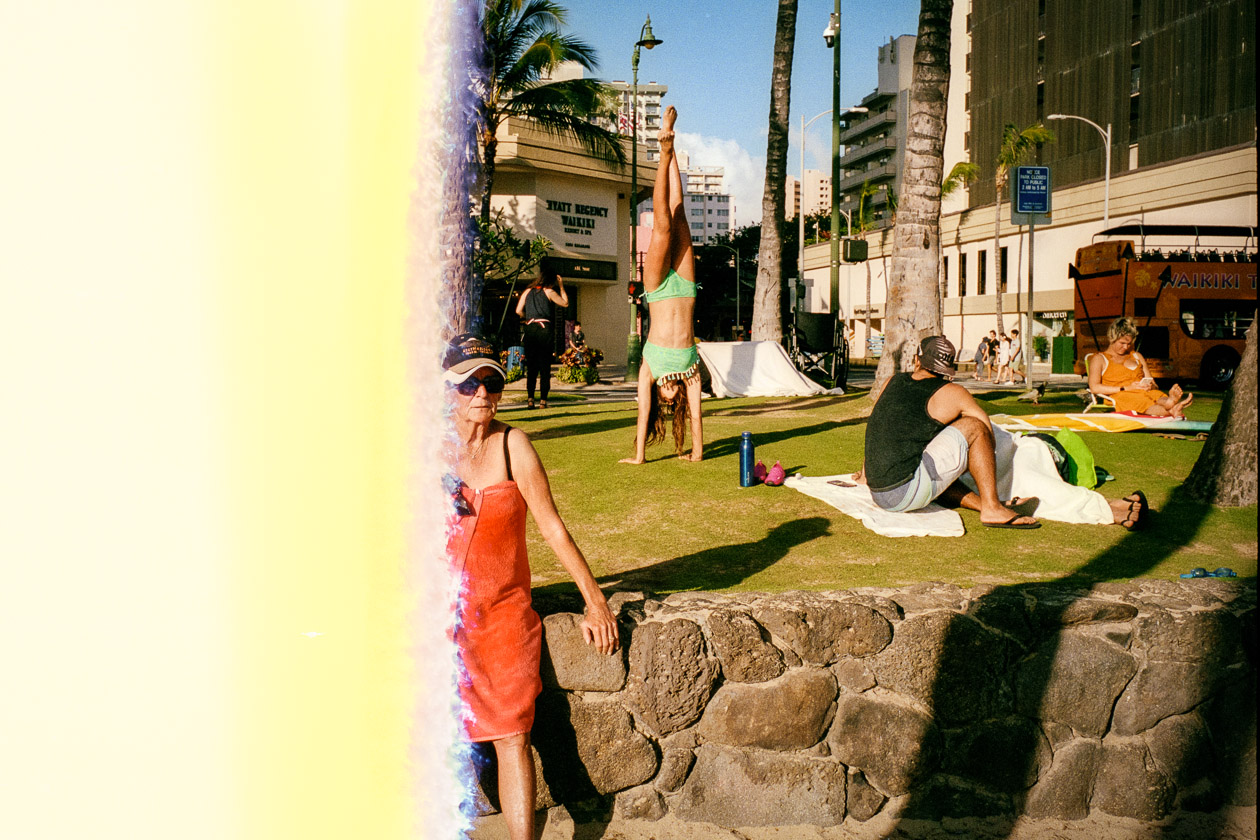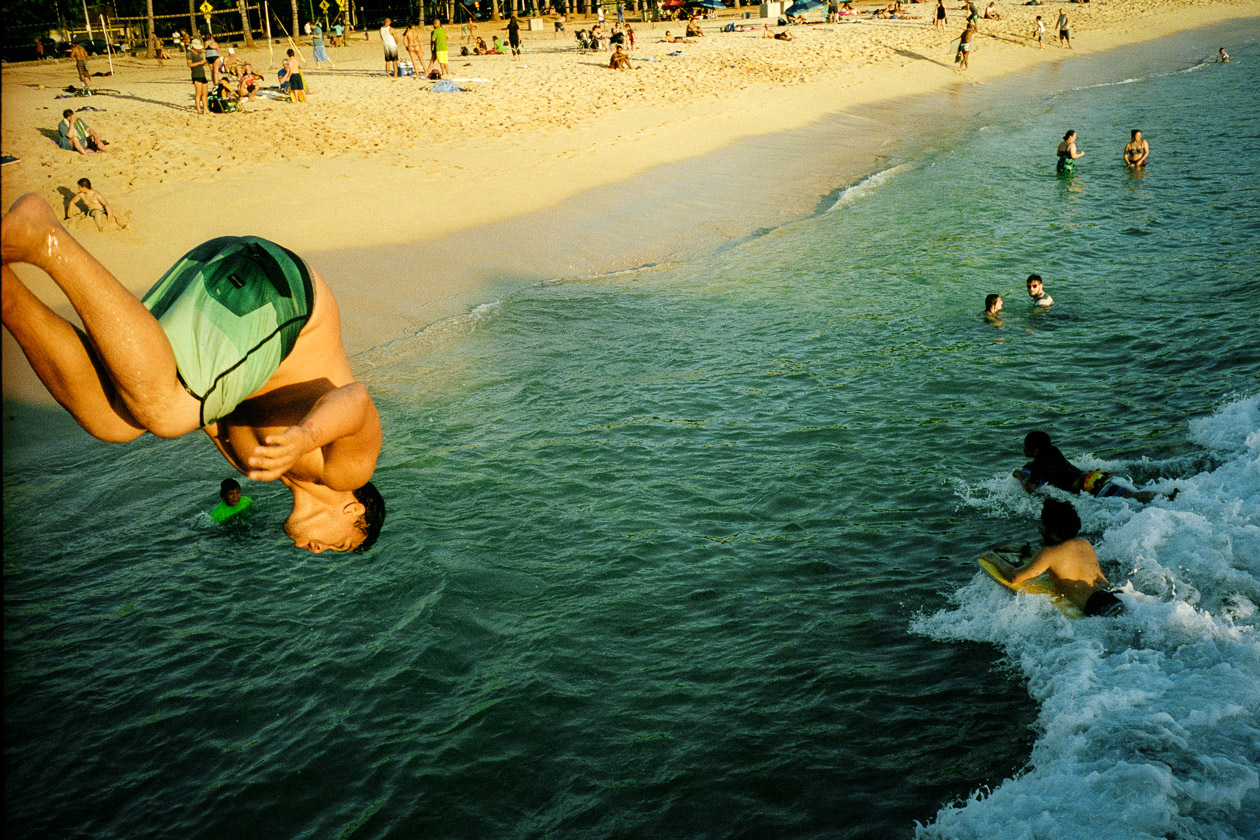Friends, today I (Amy Jasek) would like to present to you film photographer Shin Noguchi, who graciously agreed to share one of his projects with us. I have followed (been captivated by, and admired!) his work for a while on Instagram, and was particularly beguiled by the photographs he shared recently from some time spent in Hawaii. In my mind, having never been there myself, it is an island paradise punctuated by dangerous and fascinating volcanic activity. What I saw in Shin’s photographs was even better: a poignant reality, populated by interesting people. The icing on the cake for me, as a lover of words as well as images, is his expressive, evocative writing, which you can read below.
In the Place Where the Winds Rest
I reached here again. When I was walking on this island, sometimes I met the wind resting without being tied to anyone, and without worrying about time. Additionally, I also met the “winds” who chose this island as their land of the end from where they were born and raised, such as England, Texas, New Jersey, Florida...
Cheerfulness, beauty, rest and quiet.. among with them, and political issues, poverty, persecution, discrimination, disparities.. that can never be separated from them, were also flowing on this island: the island of Oahu in Hawaii is known as "The Gathering Place.”
I will definitely come back here, in the place where the winds rest, and want to be close to them. As a person who came to this land before asking myself why.
Below is our interview, via email; words in bold are mine, Shin’s responses follow in plain type.
How did you get started with photography? Specifically, how did you get started with street photography?
I grew up surrounded by many arts, foreign movies, and Jazz and Rock music because of my parents’ influence, and I wanted to record it using something when I noticed that the extraordinary moments I saw in my childhood were existing in our daily life, our ordinary life. In my teens, my father gave me an old Fujica camera, and I would shoot, shoot, and shoot my own life and other people's lives. I really love the candid / unposed photographs of people from long ago. It has been around ten years since I came to focus more deeply on the concept of human beings / society, and now people call me a "street photographer" in this society.
What do you enjoy most about street photography?
I think that street photography always projects the "truth". The "truth" that I talk about isn't necessarily what I can see, but what also exists in society, in the street, in people's lives. I always try to capture this reality beyond my own values and viewpoint / perspective, and I think, in addition to catching the truth, visual and emotional depth appears in the photographs as a result of being particular about the details. To shoot people with a camera is, for me, is like saying "hello". Sometime I use my mouth for it, sometime I use my eyes, and sometimes my camera, that's it. I just really enjoy "talking" or making conversation with people in the street, and if I use a camera for it, I always use the viewfinder; I never use hip-shots to hide myself.
Do you feel like your photography evolved in the time that passed between your trips to Hawaii? Did you find yourself looking at the place in a different way during your most recent trip, compared to when you visited in the past?
23 years ago, when I was 20 years old, I went there for the first time to visit my future wife, who was living and studying in university alone. I took some photos, but it was my first trip abroad and I could only record the superficial part of the land like other tourists. I really wanted to see and know what kind of life the locals were living, and I was able to visit there again in 2016 for the first time in 20 years. I enjoyed walking and shooting in the local streets better than last time, and this time, I tried to click the shutter by following the flow of the wind with which the locals were spending.
Why do you choose to use film?
I use Leica M6 and MP for personal work, and digital Leica M9-P for some assignments mainly. I really love the tone of the atmosphere that the film has over digital, especially Kodak Portra 400 that I have been using always. A digital sensor may be able to record almost every bit of information in the frame, but it can not capture an atmosphere, and I think the most important element in expressing human beings exists in this layer. In this layer that I call "the tone of the atmosphere," which also includes the photographer's own thoughts and process until clicking the shutter, that just existed before the photograph was born, and that arises from the fusion of "content" and "form".
Your family is obviously a big part of your life (I love the photographs of your daughters!). How do they feel about your photography?
While I'm scanning/editing photographs, my lovely three daughters watch and they give me some response, like "Dad I know this place!", "I was here when Dad captured this moment!", and they talk to each other about these moments. I think it's a very important thing / moment for the family to spend together, as well as making money to support my family, and I'm also trying to increase the time of parent-child communication through photography.
How great that they enjoy it so much! Do you ever let them borrow a camera to make pictures of their own?
If you’re asking “do you give your Leica to them when they want to use it to take pictures?” my answer is no, it’s too heavy for them, but don’t worry I give compact cameras to them, (not my smartphone!) and not just one: three cameras that I choose for each of them. I’m sure every father does this for their child; they choose amazing moments we never see with adult eyes.
Thank you so much for sharing your work and some of your story with us! I’ll be looking forward to seeing what you do next.
Connect
See more of Shin Noguchi’s work on his website (the full story on his experiences in Hawaii is here) , and on his Instagram. Also, be sure to check out Eyeshot Magazine; he is featured in the June issue! He is a member of the UP international photography collective. His new photobook will published this year in Italy, so be on the lookout for news about that as well.


